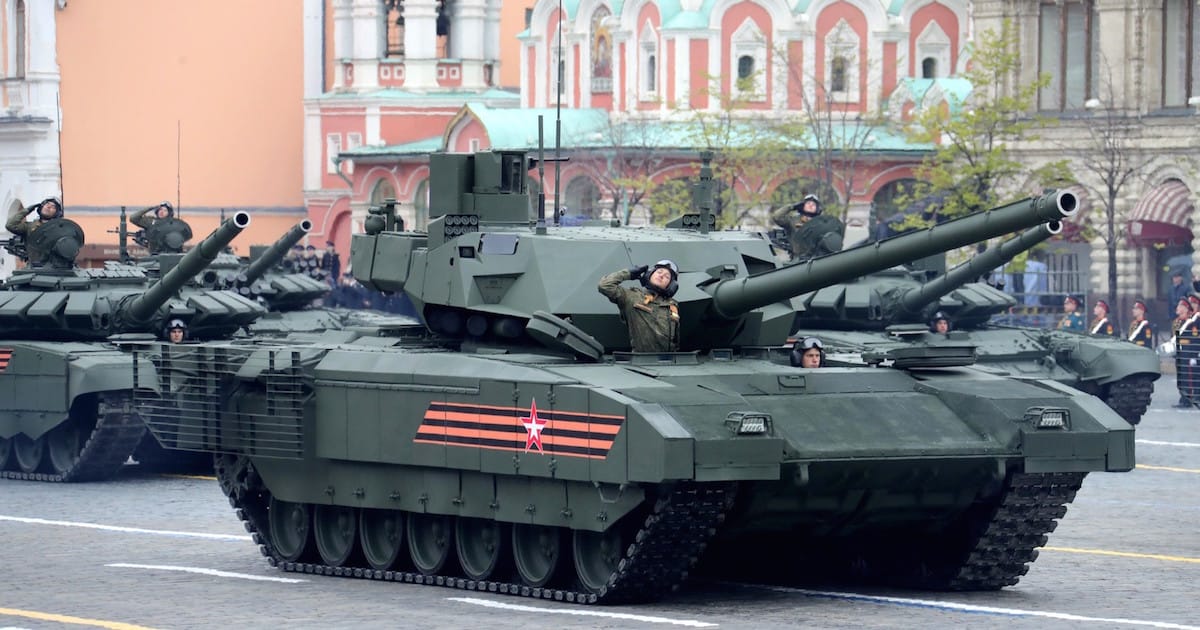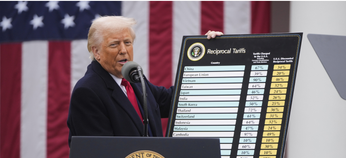
Russia on track to set new military spending records
Hello! Welcome to your weekly guide to the Russian economy — written by Alexandra Prokopenko and Alexander Kolyandr and brought to you by The Bell. This week, our top story is a deep-dive analysis of the draft budget for the next three years. We also look at why Gazprom’s profitability has collapsed.
Analyzing Russia’s draft budget for 2025-2027
The Russian government approved Tuesday a draft budget for 2025 through 2027. It envisages military expenditure rising by almost a quarter (even though the government promised last year there would be no further rises). This increase is confirmation the economy has switched a war footing, and, even if the war in Ukraine ends soon, channeling money to the army and a bloated defense sector will remain a top priority.
What’s going on?
The draft budget is optimistic. It predicts that revenue for the three years will clear 40 trillion rubles ($434 billion), while spending will be about 41.5 trillion. The deficit is expected to be less than 1%. The key figure – an increase in annual military spending to 13.2 trillion rubles (6.2% of GDP) – was not, however, announced publicly. Instead, it was reported by Bloomberg on Monday. This is a record level of military spending. In last year’s budget, 10.8 trillion rubles (6% of GDP) was allocated to the military.

Judging from official statements, the government’s working assumption last year was that spending 10.4 trillion rubles on the military would be a one-off, and that such expenditure would begin to fall in 2025. This turned out to be false. The draft budget revealed that military spending will start to fall in 2026, albeit not by much, dropping to 12.8 trillion rubles (5.8% GDP). Bloomberg did not give a figure for military spending in 2027, but reported a target of 5.1% of GDP. This means that, in absolute terms, spending on the military will remain higher than the current level for at least three more years.
However, we should not be misled by these figures. They do not reflect the Kremlin’s political or military plans – more the Finance Ministry’s wish to “live within its means”. As we saw this year, Russian President Vladimir Putin’s desire to raise yet more money for his war with Ukraine could easily torpedo the well-laid plans of his officials.
It's clear that spending on the military and security will exceed combined expenditure on education, healthcare, social policy and the national economy. In nominal terms, these categories of expenditure will either remain at the same level, or see small increases (which means a real-terms spending cut). Bloomberg’s data implies that even spending on social policy – which includes benefits – will be cut. Part of the reason for this is the spending spree that took place ahead of this year’s presidential election. “In an election year there were some one-off payments which will not be there now,” a federal official explained to The Bell.

Another key takeaway from the draft budget is an increase in classified expenditures, which encompass a variety of outlays – but most are linked to defense and national security. In 2025, these are expected to amount to 12.9 trillion rubles, an increase of 1.8 trillion rubles. Typically, classified spending includes projects on occupied Ukrainian territory.
When it comes to revenue, Prime Minister Mikhail Mishustin said that there would be a 73% increase in non-oil-and-gas incomes. He did not mention, however, how this was linked to abnormally high economic growth (VAT revenues are up due to soaring inflation) and tax hikes (income tax and corporate tax were both raised this year).
At the same time, the draft budget assumed a fall in oil and gas revenues. Next year they are expected to hit 10.94 trillion rubles (0.37 trillion rubles less than was planned in 2024). By 2027, this will fall to 9.77 trillion rubles. The reasons for the fall include stagnation in global prices for oil and natural gas, combined with a reduced tax load on industry, according to Alexander Isakov, chief economist at Bloomberg Economics.
In the event of an oil price shock, Russia would be hit hard. It’s unlikely it would be possible to balance the books – as Russia would traditionally do in such a scenario – by devaluing the ruble because of the effect of Western sanctions and import restrictions.
No unnecessary publicity
The Kremlin is clearly concerned that publicly announcing more military spending would not be well received. This was evident from the strange way the government meeting about the budget was staged. Both Mishustin and Finance Minister Anton Siluanov were selective in what they talked about, focusing on absolute figures for the full three-year period (hiding annual amounts). Military spending, which represents 32% of the entire federal budget, and 40% when combined with “national security,” was never mentioned directly.
There was no reporting about increased military spending by Russia’s business media (RBK, Kommersant, Vedomosti). None of them even reported the Bloomberg article that contained obviously newsworthy information on the draft budget. Clearly, Russian outlets were not prepared to take such a step without official permission.
The reasons for this behavior are obvious. Russians are tired of the war in Ukraine, according to a September survey by independent pollster Khroniki. More than 82% of those asked want to see an end to the fighting. The same percentage would like the government to focus on socio-economic issues. In addition, 63% of Russians want a peace treaty with Ukraine that involves mutual concessions to be signed in the coming year.
Why is military spending rising?
The war in Ukraine requires ever greater resources. The Kremlin has coped for the last two-and-a-half years thanks to partial mobilization, Soviet-era equipment stores, efforts to repair existing equipment, and attracting new recruits with high salaries. To meet the needs of its army in Ukraine, Russia has also increased production capacity at defense factories. However, these increases had largelyreached their limit by the start of this year.
To reach the next level, Russia’s defense industry requires investment – and this will not be forthcoming from private sources. It’s the same with personnel. To meet the army’s need for soldiers, Russian regions are gradually increasing bonus payments. But Russia is running out of people. The Kremlin desperately wants to avoid another wave of mobilization because it is hugely unpopular with the general public.

At present, Russia appears to be betting on the defense sector being a key driver of domestic demand. Proponents of this idea at various levels of government include Putin’s deputy chief of staff Maxim Oreshkin, presidential aide Alexei Dyumin, Deputy Prime Minister Denis Manturov and Defense Minister Andrei Belousov, a federal official told The Bell. “It’s hard for Siluanov, who wants a balanced budget, and [Central Bank head] Nabiullina, who is concerned about inflation, to overcome this lobby,” he said.
For the defense sector to continue to drive growth, there needs to be demand for its products. The ongoing war in Ukraine is obviously a big factor. But domestic demand is finite, and it's unclear what exactly could possibly be sold abroad.
Consequences
The decision to opt for increased military spending suggests Russia will continue to pursue its current economic approach for at least another year – i.e. stoking demand via government spending. As a result, the inevitable economic cooling will take longer to materialize than the government and the Central Bank previously anticipated.
One almost inevitable consequence will be higher inflation. And that means the Central Bank will likely raise interest rates from 19% to 20% at its next meeting. The regulator will have little choice but to maintain double-digit interest rates for a long time.
Why the world should care
One of the main losers from this budget looks to be state organizations and their staff. Real salaries of state employees, which are already struggling to keep pace with their colleagues in the defense or private sectors, will be eroded by inflation. Spending on construction and infrastructure (for example, roads) will also fall. In the medium term, accumulated imbalances will make the economy extremely fragile, meaning a “thunderbolt” (like a natural disaster or bankruptcy of a major business) could easily spark a crisis.
Gazprom drops out of the ratings
State-owned gas giant Gazprom, which was once regarded as a national treasure and provided 16% of the government’s annual revenue, has fallen out of a Forbes rating of the top 100 most profitable Russian companies. As recently as last year, Gazprom topped this chart. However, the loss of the European gas market has caused significant problems.
- Gazprom recorded a net loss of 629 billion rubles last year, compared with the 1.23 trillion-ruble profit it made in 2022.
- In short, the reason for this is the loss of the European gas market.Since the full-scale invasion of Ukraine, the Kremlin has tried to weaponize gas supplies, cutting off deliveries to Germany and other key customers. In response, Europe has radically reduced gas imports from Russia.
- Gazprom’s only alternative market is China, but that will never be able to fully replace Europe. Beijing is yet to approve the key “Power of Siberia 2” pipeline that would enable flows of gas to the east to be ramped up significantly.
- According to a report produced for Gazprom managers, it will not be possible to restore Russia’s gas exports to pre-war levels within the next 10 years. By 2035, the report predicted, exports will average between 50 billion cubic meters and 75 billion cubic meters a year (about a third of pre-war volumes).
- Faced with this financial crisis, Gazprom is even asking the government to reverse an increase in mineral extraction tax.
Why the world should care
Gazprom was once hailed as a national treasure – a gold mine for the Kremlin and a major tool of Russian foreign policy. Now, the once-powerful gas exporter has been reduced to begging for financial support from the state.
Figures of the week
The ruble could fall by about 5% against the Chinese yuan before the end of the year, according to analysts from SberCIB. The Russian currency has already dropped 11% against the yuan this month amid liquidity issues at Russian banks. The analysts reckon that the ruble will be worth 13.6 yuan by the end of this year if things improve with foreign trade settlements, and imports from China can increase. The fall could be even greater if capital outflow intensifies, according to the analysts.
In August, Russian clients of Austria’s Raiffeisen Bank withdrew more than 120 billion rubles from their accounts. That’s the biggest outflow in almost 18 months. It happened just before the bank announced it would suspend currency transfers from Sep. 2, RBK reported.
German police have seized servers from 47 crypto-exchanges linked to Russia. The development was part of operation Final Exchange, which is looking into how crypto-exchanges help Russia evade sanctions. According to German police, clients of the exchanges were mostly sanctioned banks and companies.
Inflation in Russia from Sept. 17 to Sept. 23 was 0.06%, down from 0.1% the previous week. Since the start of the month to Sep. 23, prices in Russia have risen 0.24%. Since the start of the year, they are up 5.52%.
Further reading
Is a “Shadow Fleet” of Oil Tankers Really Circumventing the Russian Price Cap?
Ukraine is a booming market for Balkan arms makers
The Battle for the BRICS. Why the Future of the Bloc Will Shape Global Order



PAID SUBSCRIPTION LAUNCH
From May 1, 2025, The Bell in English will no longer be free
From May 1, 2025, all The Bell’s newsletters and online content will be behind a paywall. We have taken this decision so that The Bell can remain financially independent, and maintain our high standards of journalism and economic expertise






